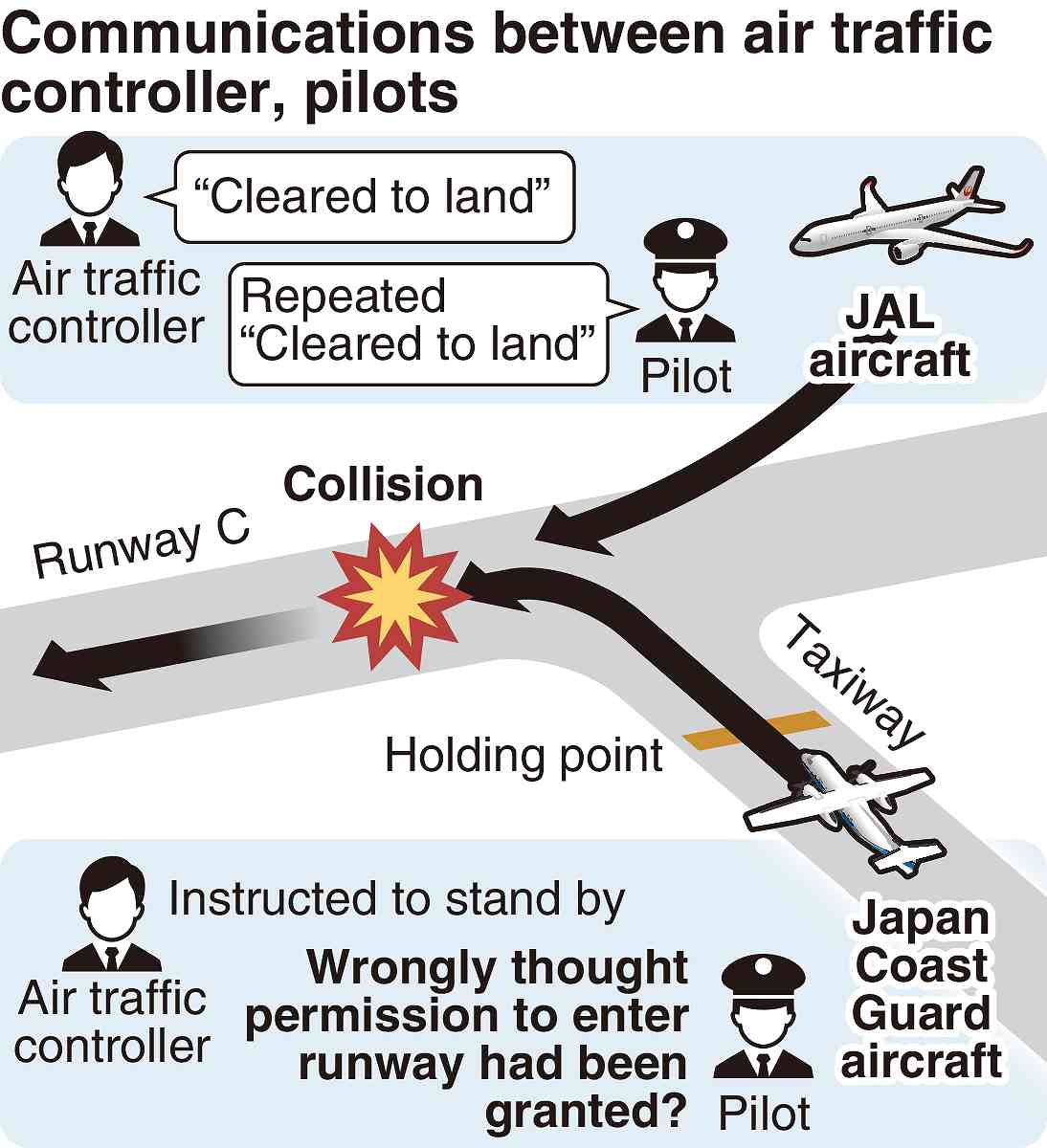Suspicion of Human Error Grows in Haneda Airport Collision; Records Indicate Coast Guard Plane Not Told to Enter Runway

Runway C, where a Japan Airlines jetliner and a Japan Coast Guard plane collided, is seen at Haneda Airport in Ota Ward, Tokyo, on Wednesday.
16:39 JST, January 4, 2024
Human error is increasingly suspected to have caused Tuesday’s collision between a Japan Airlines jetliner and a Japan Coast Guard plane at Haneda Airport.
According to communication records released by the Land, Infrastructure, Transport and Tourism Ministry on Wednesday, the JCG plane was not given permission to take off, raising the possibility that the JCG side misunderstood the instructions from air traffic control.
The Japan Transport Safety Board and other authorities are investigating how the fatal incident occurred.
The communication records show that shortly before the collision, an air traffic controller in charge of Runway C told the JCG aircraft in English, “Taxi to holding point C5.”
Taxiway C5 is located in front of Runway C. The air traffic controller only instructed the JCG plane to proceed as far as the taxiway, and did not give permission for it to enter the runway or take off. However, the aircraft proceeded onto the runway without staying on the taxiway.
Shortly before this, the controller communicated with the JAL plane and cleared it to fly toward Runway C, saying, “Cleared to land.”
According to a senior ministry official, air traffic controllers would never allow multiple aircraft to enter the same runway simultaneously, so as to avoid a collision or other contact.
Rule of repeating instructions

To move safely through the skies and at airports where many aircraft are moving around, passenger planes and other types of aircraft follow instructions from air traffic controllers and need permission to take off and land, in principle. JCG aircraft operate in the same manner as commercial airplanes.
The captains of these aircraft are supposed to repeat instructions from air traffic control to confirm them.
The communication records show the captain of the JAL jetliner repeated the instruction, saying, “Cleared to land.”
Airplanes are also required to follow instructions when taking off, regarding such points as entering the taxiway and standing by.
According to the communication records, Genki Miyamoto, the 39-year-old captain of the JCG aircraft, repeated the instruction to stay on the taxiway. However, he gave a conflicting explanation during questioning by JCG investigators after the accident, saying that he thought he had received permission to enter the runway.
The JCG aircraft crew may not have correctly understood air traffic control’s instructions for some reason.
"Society" POPULAR ARTICLE
-

M4.9 Earthquake Hits Tokyo, Neighboring Prefectures
-

Israeli Tourists Refused Accommodation at Hotel in Japan’s Nagano Pref., Prompting Protest by Israeli Embassy and Probe by Prefecture
-

M7.5 Earthquake Hits Northern Japan; Tsunami Waves Observed in Hokkaido, Aomori and Iwate Prefectures
-

Tsukiji Market Urges Tourists to Avoid Visiting in Year-End
-

High School in Kyoto Says Students Shoplifted during Recent School Trip to Bali, Indonesia
JN ACCESS RANKING
-

Tokyo Economic Security Forum to Hold Inaugural Meeting Amid Tense Global Environment
-

Keidanren Chairman Yoshinobu Tsutsui Visits Kashiwazaki-Kariwa Nuclear Power Plant; Inspects New Emergency Safety System
-

Imports of Rare Earths from China Facing Delays, May Be Caused by Deterioration of Japan-China Relations
-

University of Tokyo Professor Discusses Japanese Economic Security in Interview Ahead of Forum
-

Japan Pulls out of Vietnam Nuclear Project, Complicating Hanoi’s Power Plans























